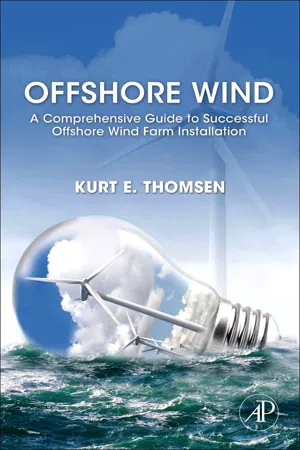
Offshore Wind
A Comprehensive Guide to Successful Offshore Wind Farm Installation
- 352 pages
- English
- ePUB (mobile friendly)
- Available on iOS & Android
About This Book
This book is the first-ever roadmap to successful offshore wind installation. It provides a ready reference for wind project managers, teaching them how to deal with complications on-site, as well as for financers, who can utilize the text as an easy guide to asking the pivotal questions of petitioning wind project developers. These developers' planning stages will be improved by the book's expert advice on how to avoid wasting money by scoping out and mitigating potential problems up-front. Wind turbine manufacturers will benefit from insights into design optimization to support cheaper installation and hauling, thereby incurring lower project costs, and helping developers establish a quicker route to profitability. The book sheds light not just on HOW to solve a particular installation difficulty, but delves into WHY the problem may best be solved in that way.
- Enables all stakeholders to achieve cheaper, faster and safer offshore wind projectrealization
- Explains the different approaches to executing on- and offshore projects, highlighting theeconomic impacts of the various financial and operational choices
- Provides practical, proven advice on how tough challenges can be overcome, using real-life examples from the author's experiences to illustrate key issues
Frequently asked questions
Information
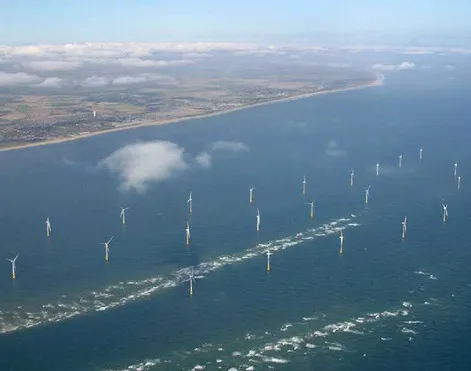 |
| Figure 1.1 Aerial photograph of an offshore wind farm. |
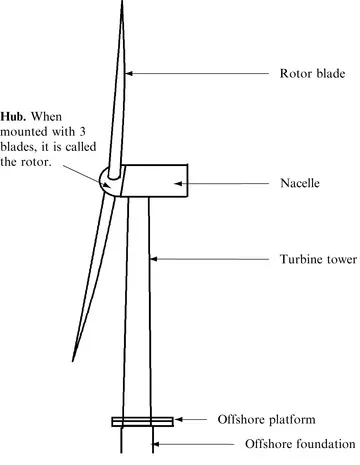 |
| Figure 1.2 Components of a wind turbine. |
Monopile
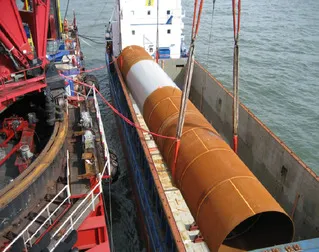 |
| Figure 1.3 A monopile being lifted out of the transport vessel. Courtesy of A2SEA. |
Gravity Base
 |
| Figure 1.4 Principle of the gravity-based foundation. |
Tripod
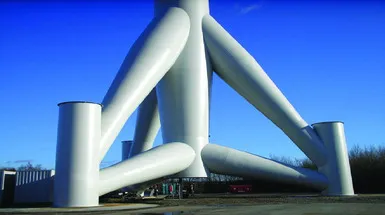 |
| Figure 1... |
Table of contents
- Cover image
- Table of Contents
- Front matter
- Copyright
- Dedication
- Preface
- Acknowledgments
- About the Authors
- Chapter One. What Is an Offshore Wind Farm?
- Chapter Two. Obtaining Permits for Wind Farms
- Chapter Three. Project Planning
- Chapter Four. The Basic Organization
- Chapter Five. Project Preparation
- Chapter Six. Project Execution
- Chapter Seven. Interface Management
- Chapter Eight. Health, Safety, and Environmental Management
- Chapter Nine. Work Vessel Coordination
- Chapter Ten. Logistics Solutions
- Chapter Eleven. Commonly Used Installation Methods
- Chapter Twelve. Vessels and Transport to Offshore Installations
- Chapter Thirteen. Basic Information about Ports
- Chapter Fourteen. Project Criteria
- Chapter Fifteen. Transporting Wind Turbines
- Chapter Sixteen. Deployment Strategies
- Chapter Seventeen. Repairing Offshore Wind Farms
- Chapter Eighteen. Environmental and Other Issues
- Conclusions About O&M Transport Systems
- Final Thoughts
- Index